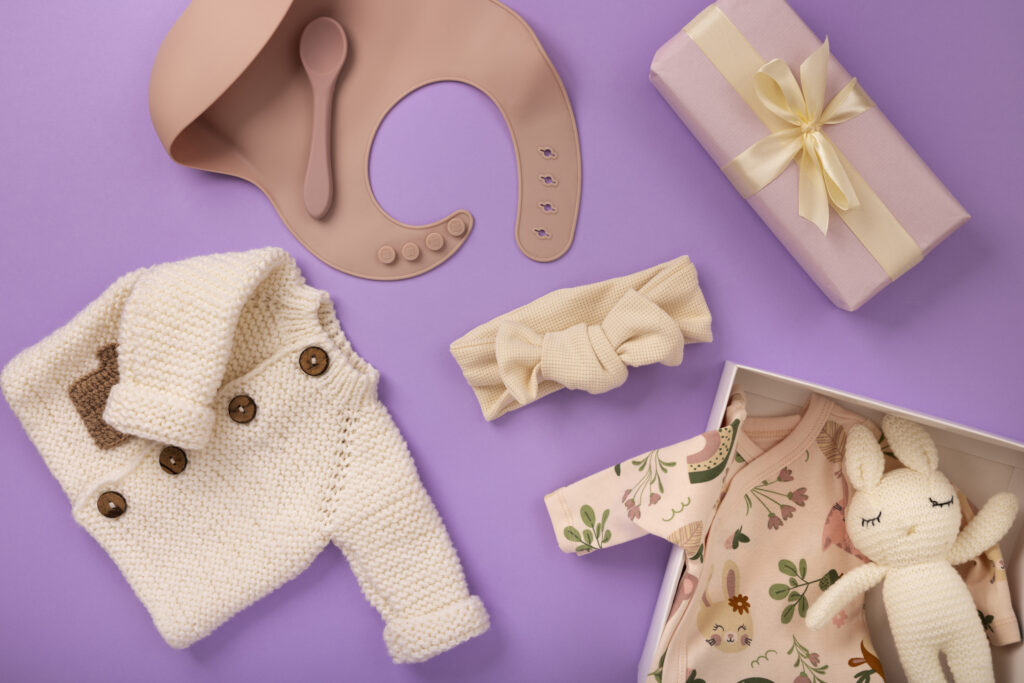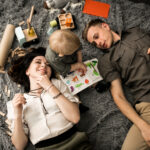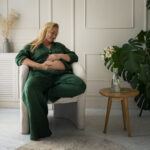When preparing for your newborn clothes, essential clothing includes soft onesies, sleepers, hats, socks, and swaddle blankets. Focus on comfort and practicality, ensuring items are easy to put on and appropriate for the season. Don’t forget extra layers for warmth!
Bringing a newborn into your life is an exciting, yet overwhelming experience. One of the most common questions new parents have is about what newborn clothes to buy. With so many options, it can be tough to know where to start. This guide simplifies the must-have items you’ll need for your newborn’s first few weeks.
1. Onesies (5-7 pieces)

Onesies are a must have item for newborns. These one-piece outfits are convenient, comfortable, and easy to change, making them essential for daily wear. Snap closures make diaper changes simple and quick.
Onesies provide a snug fit that keeps your baby cozy and secure, offering comfort throughout the day and night. Opt for soft, stretchy cotton fabrics to allow easy movement and flexibility. With a variety of colors and patterns, they are versatile for any occasion, whether it’s nap time or playtime.
2. Sleepers or Footed Pajamas (3-5 pieces)

Sleepers keep your baby warm and cozy while they sleep. They often come with built-in feet, so you don’t need separate socks. Choose soft, breathable fabrics to keep your baby comfortable.
Footed pajamas are perfect for cozy sleep and play. They allow your baby to move freely while staying warm, which helps promote better sleep. Be sure to pick soft, breathable fabrics that are gentle on their skin. Plus, many options come with zipper or snap closures for easy diaper access during the night.
3. Swaddle Blankets (3-4 pieces)

Swaddle blankets help your baby feel secure and cozy, promoting better sleep. Look for stretchy, breathable fabrics that can grow with your baby.
Swaddling can also help your baby sleep longer by preventing their startle reflex. Choose blankets that are breathable to ensure proper airflow. Opt for a few different sizes to grow with your baby as they move from snug swaddling to more relaxed sleep positions.
4. Hats (2-3 pieces)

A soft hat will keep your baby’s head warm, especially in cooler environments. Choose cotton or knit hats that fit snugly but aren’t too tight.
Hats are not only great for warmth but also offer sun protection in warmer weather. For colder months, choose hats that cover the ears to help maintain body temperature. Ensure the fit is snug, but not tight, to avoid any discomfort for your baby.
5. Mittens (2 pairs)

Mittens help prevent your baby from scratching themselves with their sharp nails. They’re usually made from soft cotton, ensuring your newborn stays comfortable.
These small, soft mittens are a practical choice for the first few weeks. They also help regulate your baby’s body temperature, preventing their hands from getting too cold. Choose mittens with elastic cuffs to keep them securely in place without being too tight or uncomfortable.
6. Socks (4-6 pairs)

Newborn socks are important to keep your baby’s feet warm. Look for socks made from soft, stretchable material that will stay on without slipping off.
Although many sleepers come with built-in feet, having a few pairs of socks is still necessary. They provide added warmth and protection, especially for babies who may kick off their blankets. Soft cotton socks are ideal, as they are gentle on delicate skin and help maintain comfort throughout the day.
7. Cardigans or Sweaters (1-2 pieces)

A soft cardigan or sweater provides an extra layer of warmth for your newborn, especially in cooler environments. Look for options that are easy to put on and take off.
Cardigans or sweaters are great layering pieces that you can add when temperatures fluctuate. Choose lightweight options for ease and comfort, ensuring your baby doesn’t overheat. These pieces are also perfect for outings, offering warmth while still allowing your baby to move freely.
8. Bibs (3-4 pieces)

Bibs are essential for keeping your newborn’s clothes clean, especially during feedings. Soft, absorbent cotton bibs help manage spit-ups and drool.
Bibs are practical and help protect your baby’s clothes from messes, especially in the early days when feeding and burping can get messy. Choose easy-to-wash bibs, which are available in a variety of materials such as cotton or terry cloth. They’re also handy when your baby starts teething and drooling more frequently.
9. Burp Cloths (3-4 pieces)

Burp cloths are another must have for managing spit ups. They’re designed to catch any excess milk or saliva while feeding, keeping your baby clean and dry.
Keep burp cloths close during and after feedings, as babies often spit up or dribble milk. Choose highly absorbent materials like cotton or muslin, and consider having a few on hand for quick cleanups. They are lightweight and easy to store, so you can always have one ready when needed.
10. Going Home Outfit (1 piece)

Your baby’s first outfit should be soft, simple, and easy to put on. A cute onesie or sleeper with matching accessories like a hat will make the perfect introduction to the world.
The going-home outfit marks your baby’s first big adventure outside the hospital, so choose something simple but sweet. Look for outfits that are easy to change in and out of, as newborns can be fussy in unfamiliar settings. Opt for soft cotton fabric to keep your baby comfortable and stylish for this memorable moment.
How to Dress a Newborn?
- Prioritize Comfort: Soft, breathable fabrics like cotton are best for newborn skin. Avoid clothes with too many buttons or zippers.
- Consider the Weather: Adjust clothing based on the season. In colder months, you’ll need warmer options, while in warmer climates, lighter fabrics will keep your baby comfortable.
- Pre-wash Baby Clothes: Always wash new baby clothes before wearing them to remove any potential irritants. Use baby-friendly detergent.
- Choose Practicality Over Fashion: While it’s tempting to buy stylish clothes, comfort and ease of dressing should be your priority for newborns.
FAQ

1. How many onesies do I need for a newborn?
You should aim for about 5-7 onesies for your newborn. Onesies are comfortable and easy to change, making them an essential part of your baby’s wardrobe. Consider having a few extras in case of accidents or spills.
2. What size clothes should I buy for my newborn?
Newborn clothes are typically sized for babies weighing 5-8 pounds, but if you’re expecting a larger baby, consider buying 0-3 months. Many parents recommend purchasing a mix of both newborn and 0-3 month sizes to accommodate growth spurts.
3. Do newborns need hats?
Yes, newborn hats are important, especially in cooler environments, to keep your baby’s head warm. Cotton or knit hats that fit snugly without being too tight are ideal. Hats also provide sun protection in warmer months.
4. Should I buy newborn clothes with zippers or buttons?
When shopping for newborn clothes, zippers are often more convenient than buttons, especially for late-night diaper changes. Choose clothes with easy access closures, such as zippers or snap buttons, to make dressing and undressing quicker and more comfortable for both you and your baby.
5. Can I buy baby clothes in advance?
It’s perfectly fine to buy baby clothes in advance, but be sure to purchase a variety of sizes. Babies grow quickly, so stock up on essentials for both newborn and 0-3 months. It’s also helpful to choose clothes for different seasons based on your baby’s due date.
6. What clothes should I pack in my hospital bag?
For the hospital, pack at least two onesies, a sleeper, a hat, and socks for your newborn. Also, include a soft blanket and the going home outfit, which can be a simple onesie or sleeper. Make sure all clothes are soft, easy to put on, and comfortable for your baby.
7. How do I care for newborn clothes?
Wash all newborn clothes before wearing them to remove any chemicals or irritants. Use a mild, baby safe detergent and avoid fabric softeners. Washing in gentle cycles and drying clothes on a low setting will help preserve the fabric and keep them soft.
Conclusion
When shopping for newborn clothes, focus on comfort, practicality, and layers. By stocking up on a few essential items like onesies, sleepers, hats, and socks, you’ll have everything you need to keep your baby warm and happy during their first few months. Happy shopping, and enjoy dressing your little one!



